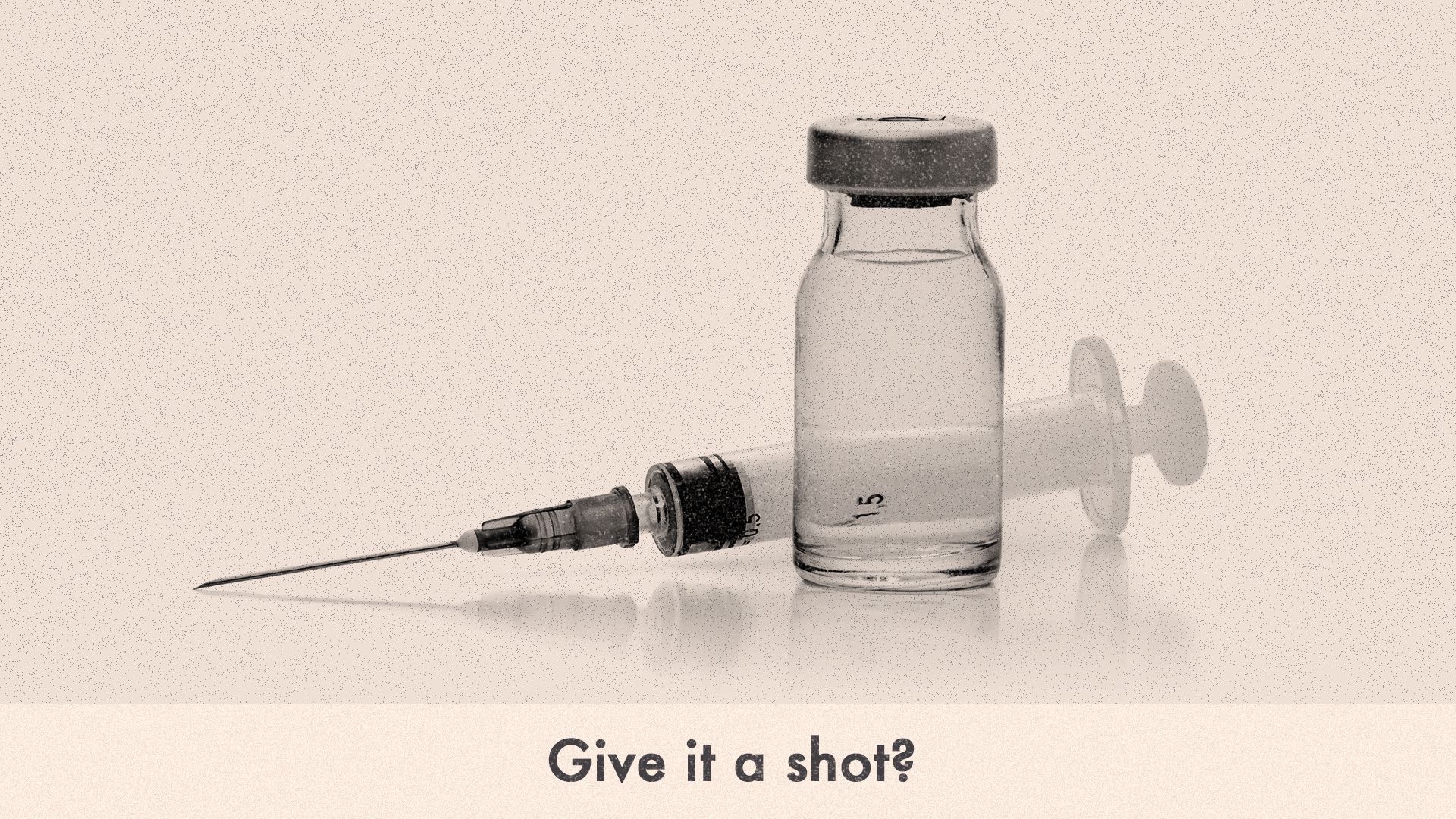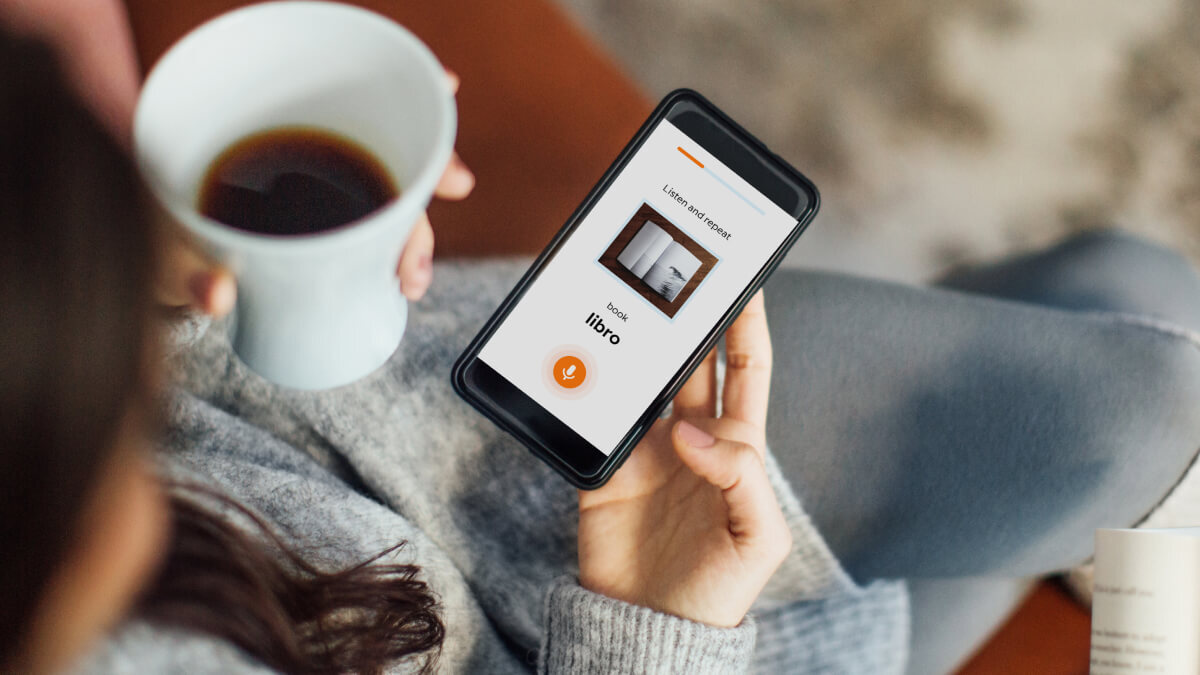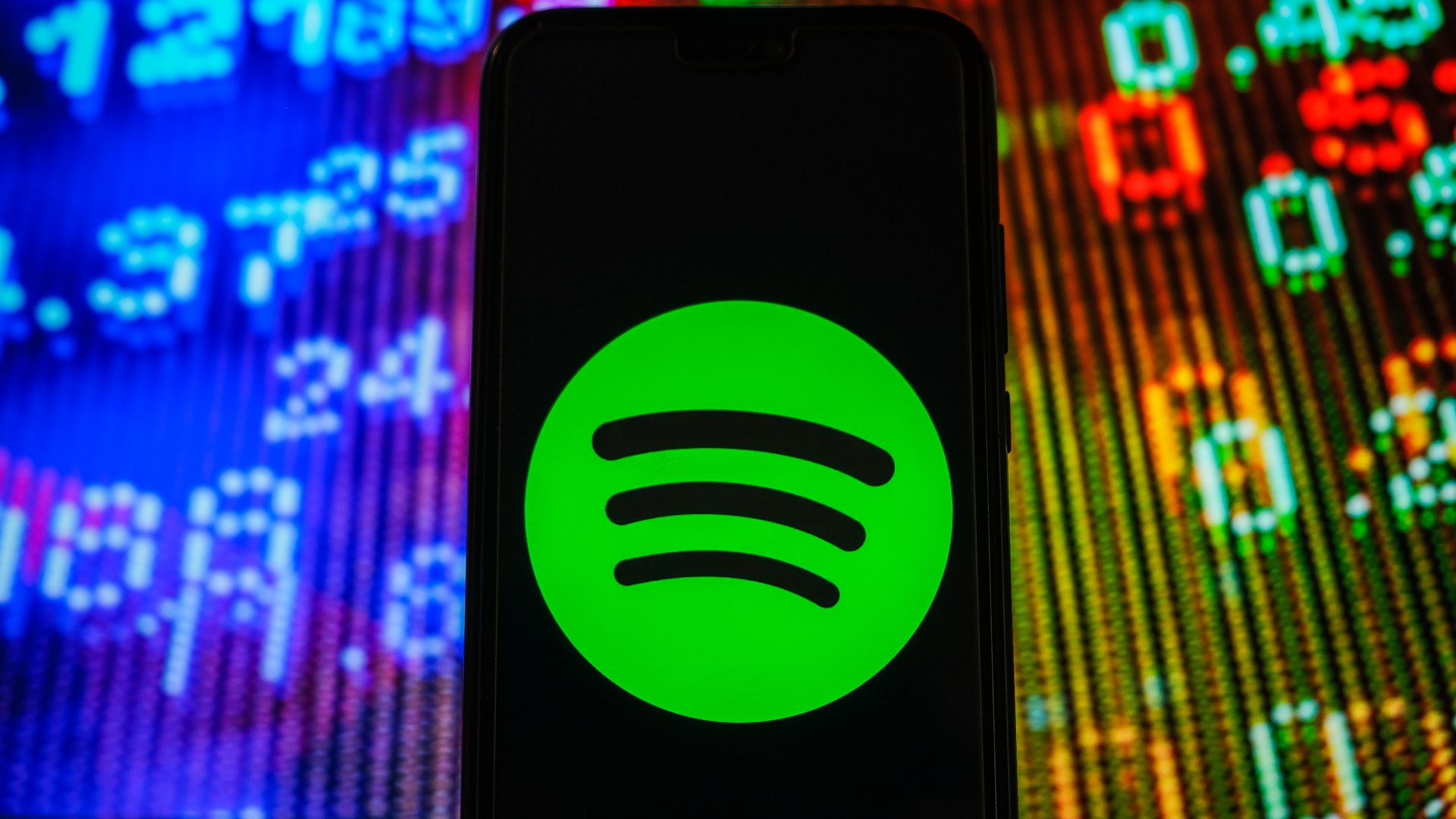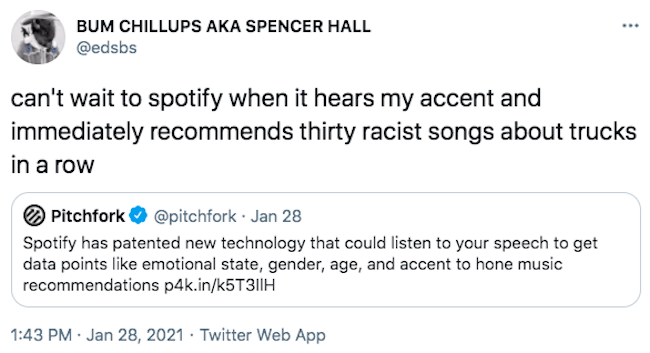| | | | | | | Presented By Babbel | | | | Axios Future | | By Bryan Walsh ·Jan 30, 2021 | | Welcome to Axios Future, where against all the laws of God and man, it is somehow still January. Today's Smart Brevity count: 1,914 words or about 7 minutes | | | | | | 1 big thing: We're selling the vaccine short |  | | | Illustration: Aïda Amer/Axios | | | | The effectiveness of the COVID-19 vaccines against disease and death has been remarkable, but too much emphasis on the unknowns about transmission could discourage people from getting vaccinated. Why it matters: The best vaccine in the world won't stop the pandemic if too few people take it. - While some uncertainty remains about their impact on spread and their effectiveness against new variants — not to mention distribution problems — the biggest challenge may be how to talk about vaccines to those who think the shots aren't worth it.
Driving the news: On Friday, Johnson & Johnson announced that its one-shot vaccine proved 66% effective against COVID-19. - That's less than the 95% protection provided by earlier mRNA vaccines from Moderna and Pfizer, but the headline numbers underplay the effect the new shot could have on controlling the pandemic.
- In a more than 44,000-person study conducted across multiple countries, the Johnson & Johnson vaccine prevented 85% of severe infections and 100% of hospitalizations and deaths.
Yes, but: While demand for coronavirus vaccines exceeds supply right now, recent polling suggests more than half of the U.S. would still decline or delay a shot if one were available to them now for free. - Some of that hesitancy is driven by general skepticism about vaccines and specific concerns about the new shots, despite reams of scientific data underscoring their safety.
- But it doesn't help that much of the messaging around the vaccines emphasizes uncertainty about their effect on transmission as opposed to disease and death.
- It also pushes the idea that life shouldn't change for the vaccinated even after they've gotten all of their shots, as they might have to keep wearing masks and social distancing afterward.
- That messaging has been seized on by those who feel the personal threat of getting COVID-19 doesn't justify accepting a shot, and by groups who want to delay a return to normal even after vaccines have become much more available.
Context: It's true that scientists have yet to produce clear data on how the vaccines might impact transmission, which can occur asymptomatically with COVID-19. Details: We won't know for sure whether the vaccines halt the chain of infection as well as prevent disease until scientists can carry out focused studies and observe the effects of growing vaccination numbers. - Concerns also remain about the impact that more contagious variants will have on the effectiveness of vaccines.
- But none of this should be considered a reason to forego a shot for populations it has been approved for.
Yet some scientists worry that is precisely the message many hesitant about the vaccines will take away from the headlines. - "Trying to eliminate even the lowest-risk changes in behavior both underestimates people's need to be close to one another and discourages the very thing that will get everyone out of this mess: vaccine uptake," Harvard epidemiologist Julia Marcus wrote recently in the Atlantic.
The bottom line: Public health is a delicate dance, one that requires experts to balance scientific rigor — which demands clear evidence that is often lacking in the midst of a crisis — with the need to shepherd an often stubborn public. - But right now, Americans need a clear message about the public and personal benefit of vaccination, lest we miss our best chance to stop this catastrophe.
|     | | | | | | 2. The shift to private R&D investment may curtail innovation |  | | | Stanford University. Photo: Philip Pacheco/Getty Image | | | | A new study makes the case that as funding for university research shifts from government to private firms, entrepreneurship suffers. Why it matters: The share of research funding to universities from the federal government has declined as private companies make up a bigger proportion of R&D spending. Far from encouraging the development of new companies, the shift may be slowing the pace of valuable innovation. What's happening: In a new working paper, researchers led by Tania Babina of Columbia Business School compared research grants, patent filings and U.S. Census Bureau data to identify the effects that changes in the sources of university research funding had on academic scientists. - Tracking the career outcomes of researchers in high-tech fields, they found that a higher share of private-sector R&D funding leads to more patents and an increased likelihood of researchers leaving academia to join the companies that funded their work.
- When government funding predominates, however, it leads to a higher likelihood of scientists remaining in academia and more new startups spinning off the research.
What they're saying: "If you get more private funding, it creates intellectual property that companies can appropriate through patents," says Elisabeth Ruth Perlman of the U.S. Census Bureau's Center for Economic Studies, one of the paper's co-authors. - "With federal money, those new ideas are open to be taken by people who worked on them and commercialized through the wider startup ecosystem."
By the numbers: Since 2000, federal funding as a percentage of university R&D has fallen from 60% to below 45%, while corporate funding has risen from 20% to 30%. - By some metrics, rates of entrepreneurship in the U.S. have been declining since the 1970s, and Perlman notes that "when you have more private money going in, you see more products of university research flow to large established companies that have the money to give those grants."
Flashback: The paper cites the example of a company born in the late 1990s through research funded in part by the federal government, which left its founders free to commercialize their innovations. Go deeper: Biden seeks to "refresh" America's grand science strategy |     | | | | | | 3. Quantum computing comes to drug discovery |  | | | Illustration: Sarah Grillo/Axios | | | | The pharmaceutical giant Roche is partnering with a quantum computing startup to find new treatments for disease. Why it matters: The ability of quantum computers to model reality at the most foundational levels positions it as an ideal tool for rapidly searching for new drugs — provided, of course, the computers themselves can work. Driving the news: On Thursday, Roche announced it would begin using specialized algorithms produced by Cambridge Quantum Computing (CQC) to simulate quantum-level interactions in an effort to research new treatments for Alzheimer's and other diseases. How it works: CQC designs custom algorithms that can produce useful insights when run on a quantum computer. - Roche will use CQC's EUMEN quantum chemistry platform to simulate quantum-level interactions in an effort to identify molecular combinations that could prove effective against disease.
- Finding a new drug is akin to searching for a needle in a haystack, but the sheer speed of quantum computers can accelerate that process, saving drug companies money and hopefully getting new treatments to patients faster.
What they're saying: "Especially in chemistry and material science, the impact of quantum computing is going to be profound," Ilyas Khan, CQC's CEO, told Axios in an interview last year. The catch: Quantum computers, while powerful, are still error-prone and unstable, which has limited their practical value. - That puts a premium on the development of custom algorithms that can get the most out of these systems.
The bottom line: As Khan told me, "Ultimately, you need a quantum system to understand a quantum system." Share this story |     | | | | | | A message from Babbel | | How to train your brain to learn a new language | | |  | | | | Babbel is helping people learn a new language with 15 minutes of daily practice. The result: Within three weeks, many of the app's users are conversational in their language of choice. Choose from 14 different languages, including Spanish and French, and get 50% off. | | | | | | 4. Nobel-winning chemist Paul Crutzen dies at 87 |  | | | Atmospheric chemist Paul Crutzen. Photo: Leber/ullstein bild via Getty Images) | | | | Paul Crutzen, the Dutch atmospheric chemist whose work helped save the ozone layer and who later popularized the idea of the "Anthropocene," died on Thursday. The big picture: Crutzen's research was key to identifying the role that human-made chlorofluorocarbons (CFCs) played in destroying the ozone layer. But his truly lasting legacy may be his early recognition that human beings had so altered the world that we had entered a new geological epoch: the Anthropocene. Background: Crutzen, who died at 87 after a long illness, shared the Nobel Prize for Chemistry in 1995 for his work predicting the development and mechanics of the ozone hole. - Crutzen, along with Mario Molina and Sherwood Rowland, showed that continued use of CFCs — chemicals used in aerosol sprays and refrigerants — would lead to greater levels of ozone depletion, which in turn would damage human health and the environment.
- Their work laid the groundwork for the passage of the Montreal Protocol in 1987, an international treaty that phased out ozone-depleting substances and quite literally helped save the world.
Details: Later in his career, Crutzen began looking to the enormous impact human activities were having on the planet — so enormous, in fact, that it represented an utter break in the Earth's 4.5 billion-year history. - In a 2002 Nature article, Crutzen coined a name for that new epoch: the Anthropocene.
- As Crutzen co-wrote in an article nine years later: "We humans are becoming the dominant force for change on Earth."
- It makes sense, then, that Crutzen later moved on to studying solar geoengineering that could artificially cool the climate if global warming ran out of control, an action that if undertaken would represent perhaps the ultimate expression of the Anthropocene.
The bottom line: Crutzen's legacy is a healing ozone layer — and a clearer vision of the world we've made. Share this story |     | | | | | | 5. Worthy of your time | | The importance of "existential hope" and grand futures (Richard Fisher — The Long-termist's Field Guide) - Thinking about the future doesn't have to be all doom and gloom. In other news, I've been reading your emails.
Why your education and job could mean you're paying too much for car insurance (Kaveh Waddell — Consumer Reports) - An investigation from a former Axios Future writer on the ways car insurers use often unfair and biased data benchmarks to set individual prices.
Nuclear proliferation is not fast, but it's frightening (Economist) - What did I say about no doom and gloom? Anyway, more countries with nukes would mean a growing risk of catastrophic conflict.
Next Door is quietly replacing the small-town paper (Will Oremus — OneZero) - As local media withers, the future of small-town reporting may be a highly problematic neighborhood social media platform.
|     | | | | | | 6. 1 tone thing: Mood music |  | | | Spotify logo. Photo Illustration: Omar Marques/SOPA Images/SOPA Images/LightRocket via Getty Images | | | | The music-streaming company Spotify was granted a patent for technology that aims to interpret users' speech and background noise to better curate the music it serves up. Why it matters: Aside from being a little weird and invasive, the technology is an example of a future trend in computing: emotion recognition. What's happening: Music Business Worldwide reported this week that Spotify had filed in February 2018 and been granted this month a patent that uses "speech recognition to determine [users'] 'emotional state, gender, age, or accent' — attributes that can then be used to recommend content." How it works: According to the patent filing, the company is developing technology that could extract "intonation, stress, rhythm, and the likes of units of speech" that would permit the "emotional state of a speaker to be detected and categorized." - Combined with other data from a user's listening history and past requests, appropriate music could then be recommended or played.
What they're saying: Not surprisingly, the internet had fun with this one. The catch: Technology companies often file patents for innovations that are never used in their products, and a company spokesperson told Pitchfork, "We don't have any news to share at this time." What's next: Whether or not this capability ever makes it into Spotify, companies are increasingly exploring technology that purports to recognize emotional states through voice tone. - Amazon's new Halo fitness tracker analyzes users' vocal tone to evaluate how they're coming off to other people.
- But there are concerns that emotion recognition could be misused — a report released this week from a U.K. human rights group identified dozens of companies in China using the technology, including some working with the police.
The bottom line: I'm a Spotify user, but the company wouldn't need to read my tone to serve up emotionally appropriate music. - Happy? The National. Sad? The National. A bit phlegmy? The National.
|     | | | | | | A message from Babbel | | The app that'll teach you a new language in less than a month | | |  | | | | With Babbel, you can become conversational in a new language with just three weeks of practice. The reason: The #1 sessions app teaches you the skills you need for real life scenarios, excluding any random words or unhelpful phrases. Get 50% off one of 14 languages. | | | | | | Axios thanks our partners for supporting our newsletters.
Sponsorship has no influence on editorial content. Axios, 3100 Clarendon Blvd, Suite 1300, Arlington VA 22201 | | | You received this email because you signed up for newsletters from Axios.
Change your preferences or unsubscribe here. | | | Was this email forwarded to you?
Sign up now to get Axios in your inbox. | | | | Follow Axios on social media:    | | | | | |









No comments:
Post a Comment